Welcome to the 2023 Annual Safety Review (ASR), which looks at the safety performance of the European aviation system in 2022. This, and other analyses carried out by EASA in collaboration with the National Aviation Authorities (NAAs) and industry is used to support the decision-making that is reflected in the European Plan for Aviation Safety (EPAS). Therefore, where risks are identified, further analysis is performed and when needed, mitigation actions are included in the EPAS. This is a continual workstream as part of the European Safety Risk Management Process.
The report provides an analysis of accidents, serious incidents and other occurrences, using ICAO Annex 13 definitions. The source is EASA’s occurrence database, complemented by the European Central Repository (ECR), which contains the reports collected under Regulation (EU) No 376/2014. The ASR also provides information on the level of occurrence reporting in Europe and on EASA’s standardisation activities.
Safety landscape
Before starting with the analysis, it is useful to mention some developments and achievements that support the reporting, analysis and mitigation of safety risks in Europe.
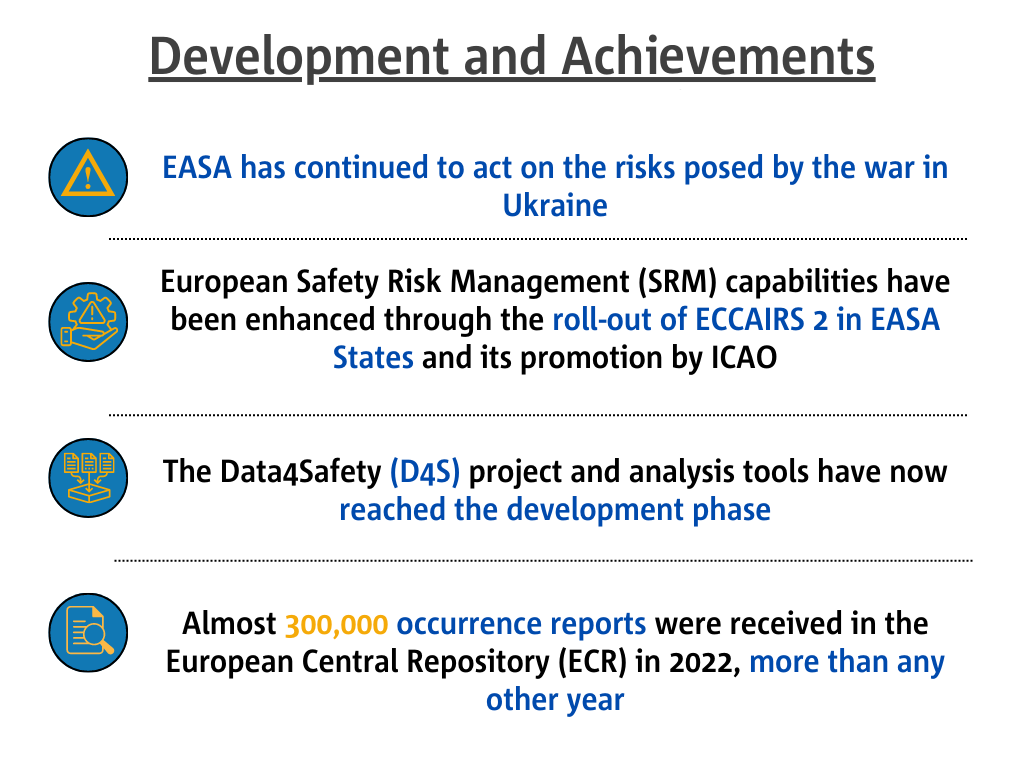
What’s new this year
- Domain specific appendices have been introduced with more advanced safety data and analysis for our specialised readers
- Where a domain safety risk portfolio exists, the domain specific appendix outlines the safety issues that have been identified. The appendices include safety issues, which are prioritised based on their aggregated risk contribution using ERCS.
- An airworthiness analysis is provided in the product-related domains. The term airworthiness includes aircraft design, aircraft production, and aircraft maintenance. The analysis shows the contribution of aircraft system loss and malfunction to the accidents and serious incidents, including the distribution of the main Air Transport Association (ATA) chapters. A slightly deeper analysis reveals the contribution of design, production, and maintenance to aircraft system loss and malfunction; i.e. highlighting the systemic root cause of a system or equipment failure.
- Updated aircraft chapters
- A section in Chapter 2 ‘Aeroplanes’ was added to provide safety data on the commercial air transport passenger and cargo operations conducted by EASA Air Operator Certificate (AOC) holders with non-complex aeroplanes.
- Commercial air transport — the complex aeroplanes section covers the commercial air transport passenger and cargo operations carried out by EASA Air Operator Certificate (AOC) holders with complex aeroplanes with a maximum certified take-off mass exceeding 5 700 kg or equipped with (a) turbofan engine(s) or more than one turboprop engine. Examples include airline, air taxi and air ambulance.
- The Air Traffic Management/Air Navigation Services (ATM/ANS) domain concerns occurrences where the provision of services by the ATM/ANS was, directly or indirectly, a contributing factor in the occurrence or played a role in aggravating the occurrence encountered by the aircraft.
- The new ‘Occurrence Categories’ section, presents a per domain analysis of the last 5 years of occurrences, using the ICAO Accident Incident Data Reporting (ADREP) taxonomy.
Key figures and facts
-
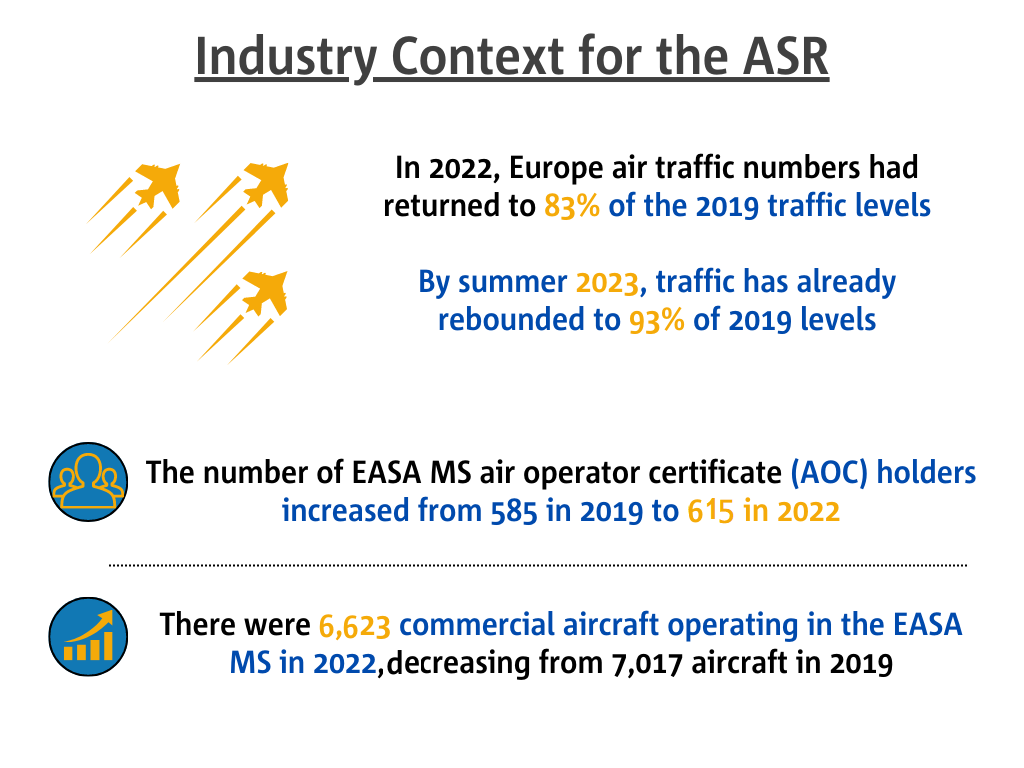
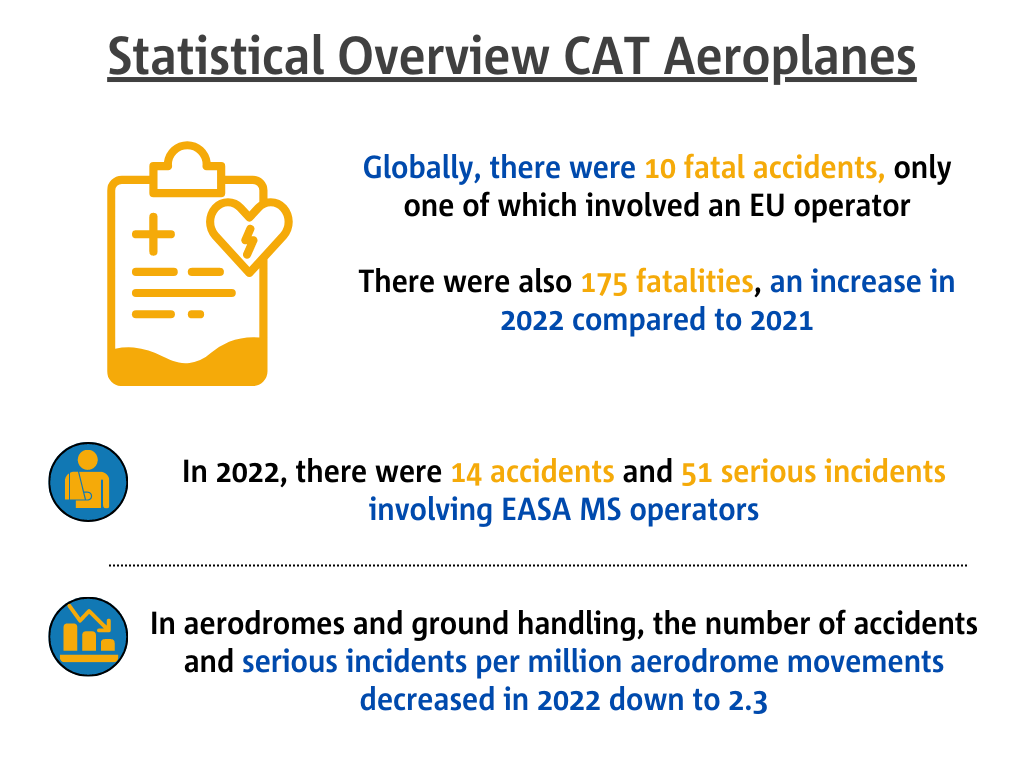
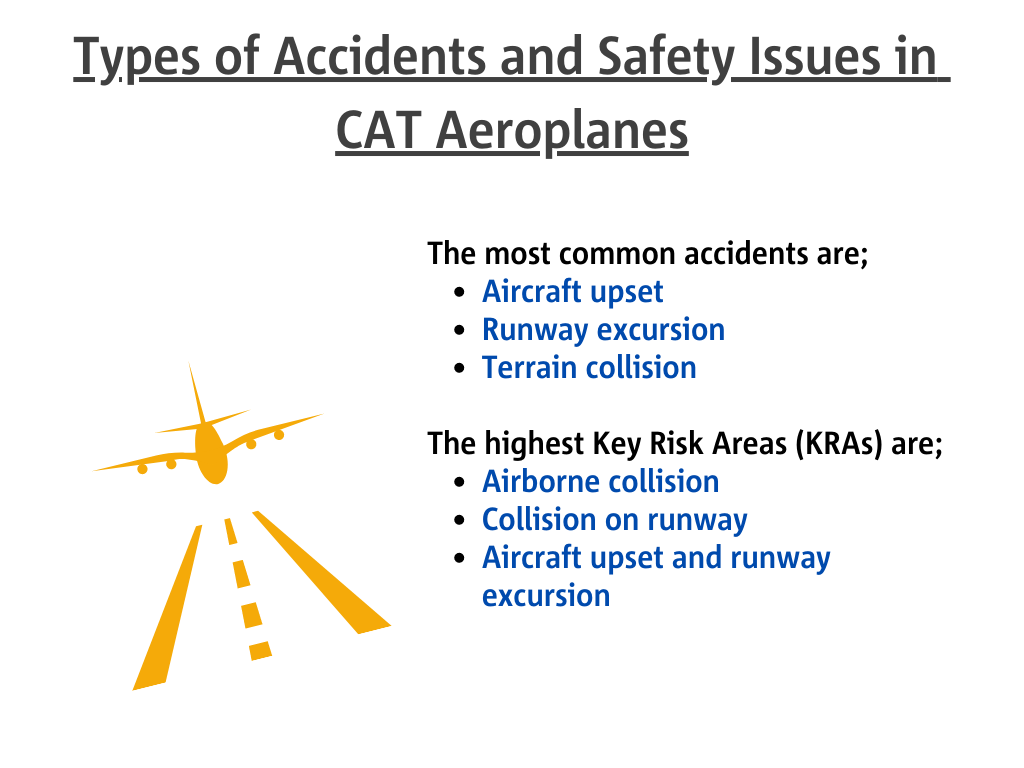
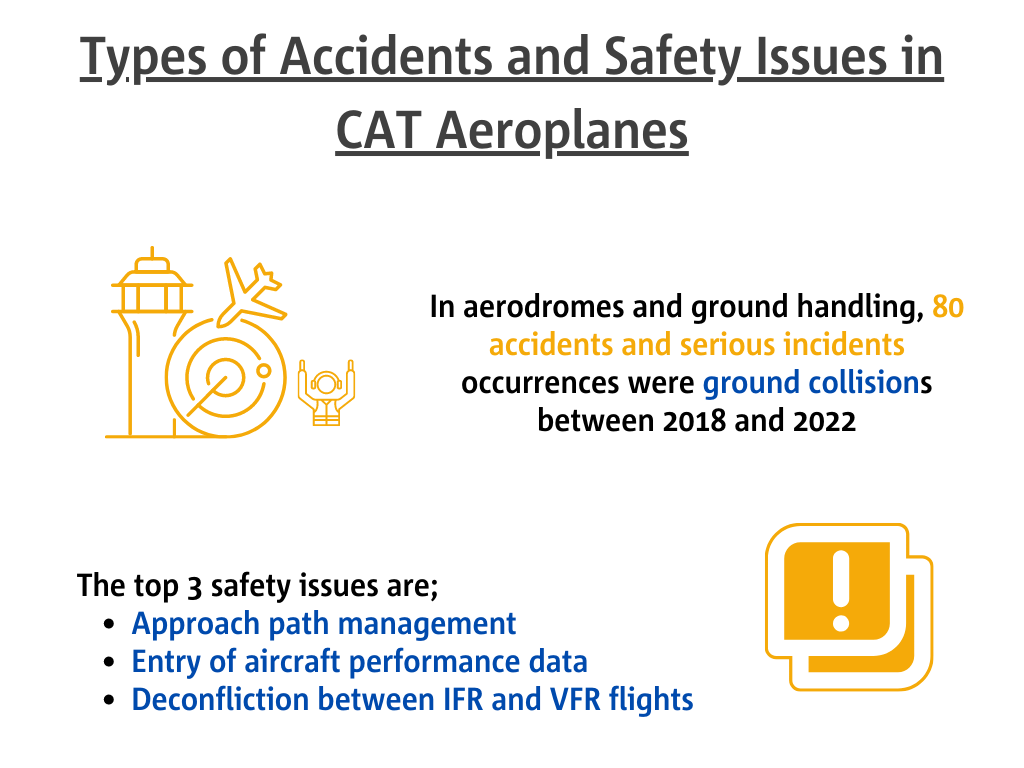
Further reading and analysis
- Chapter 1 – Safety Overview: Global safety picture.
- Chapter 2 – Analysis of commercial aeroplanes with occurrence class (accidents/ incidents), fatalities and injuries, occurrence categories, flight phase and operation type.
- Chapter 6 – Aerodromes and ground handling.
- Chapter 7 – ATM/ ANS.
- Appendix 1 – Full list of fatal accidents.
- Appendix 2 – Advanced statistics: CAT and non-commercial ops with complex aeroplanes (Section 1), CAT with non-complex aeroplanes (Section 2).
-
SPO Aeroplanes
- There were 13 accidents and 5 serious incidents in Part SPO aeroplane operations in 2022, this was one more than in 2021, but still lower than the previous 9 years.
- In Part SPO there were 3 fatal accidents with 5 fatalities, only 2020 had fewer fatalities and other years considerably more.
- Parachuting and sailplane towing were the SPO operations that led to 75% of the accident and serious incidents in 2022.
- The highest Key Risk Areas (KRAs) for Part SPO are aircraft upset, terrain collision and airborne collision.
-
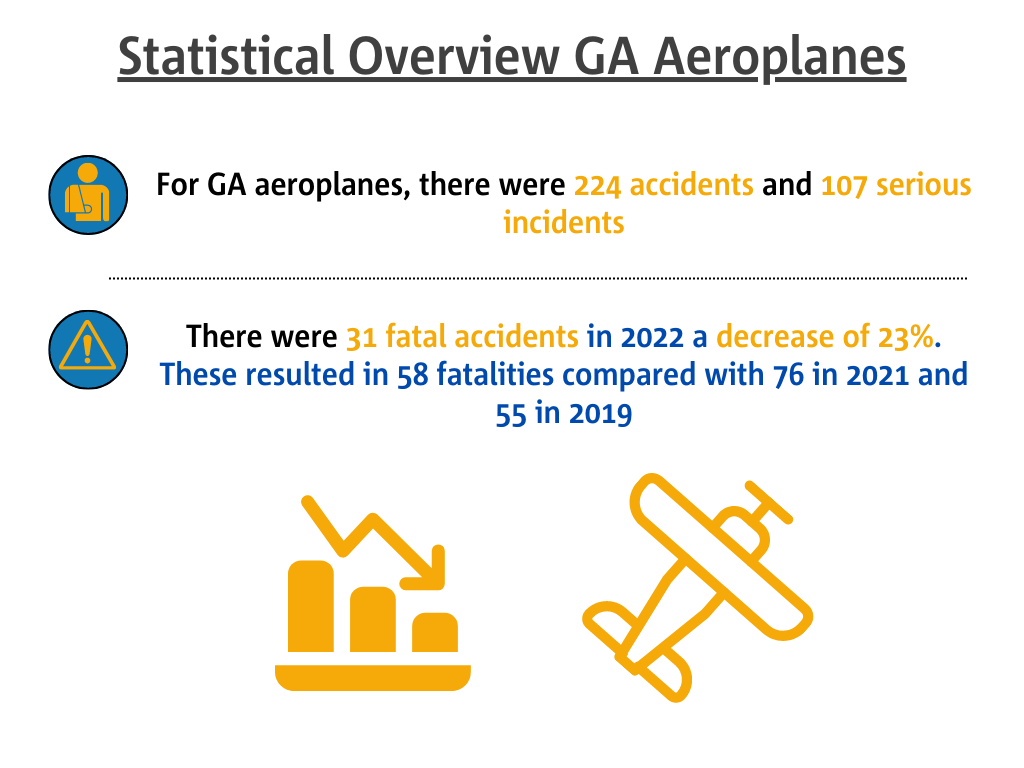
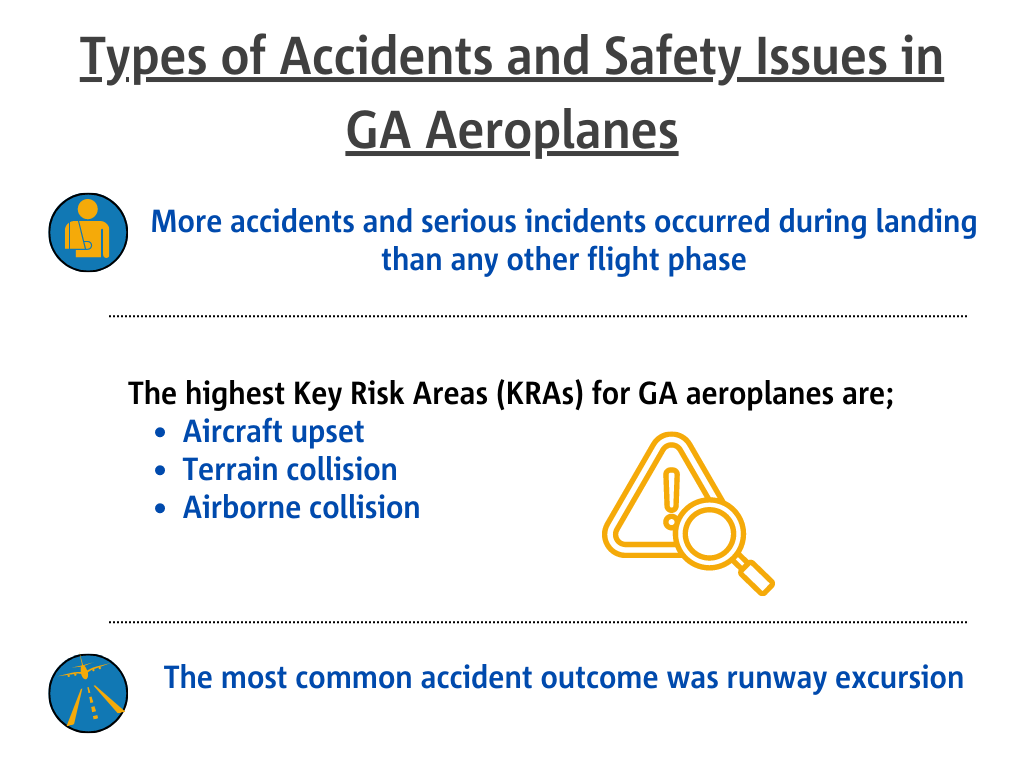
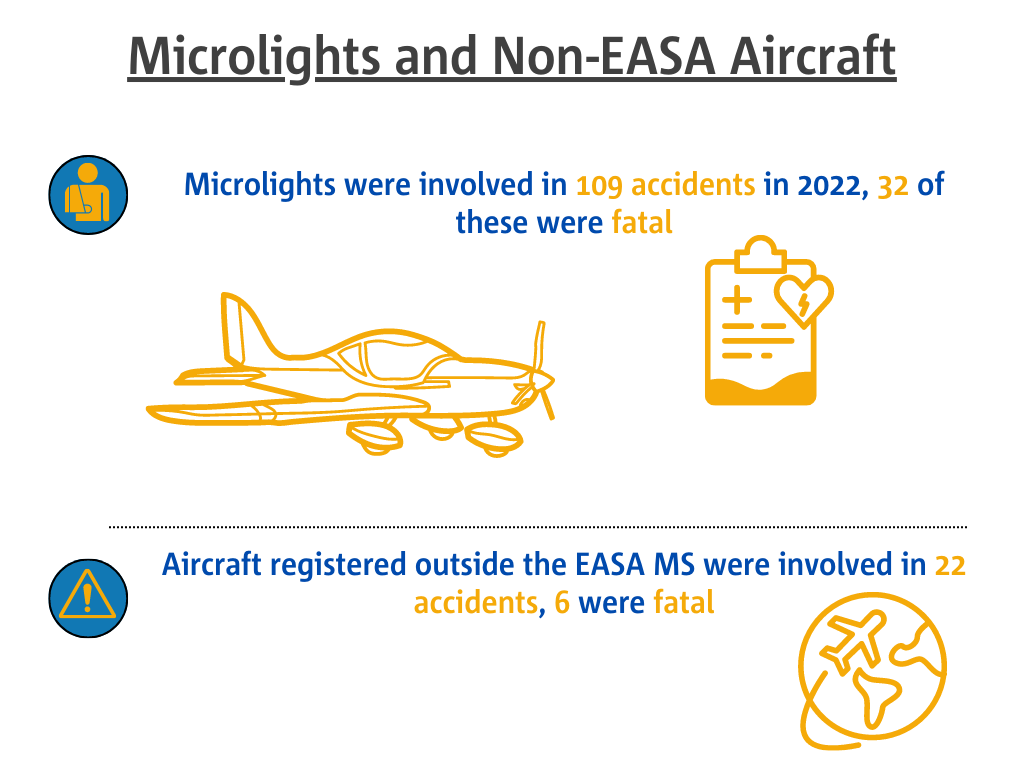
NCC Aeroplanes
- 2 fatal accidents involving EASA MS registered or operated non-commercial operations with complex motor-powered aeroplanes in 2022 with 10 fatalities.
Further reading and analysis
- Chapter 1 – Safety Overview: Global safety picture.
- Chapter 2 – Analysis of non-commercial aeroplanes with occurrence class (accidents/ incidents), fatalities and injuries, occurrence categories, flight phase and operation type.
- Appendix 1 – Full list of fatal accidents.
- Appendix 2 – Advanced statistics: Non-commercial ops with non-complex aeroplanes (Section 4).
-
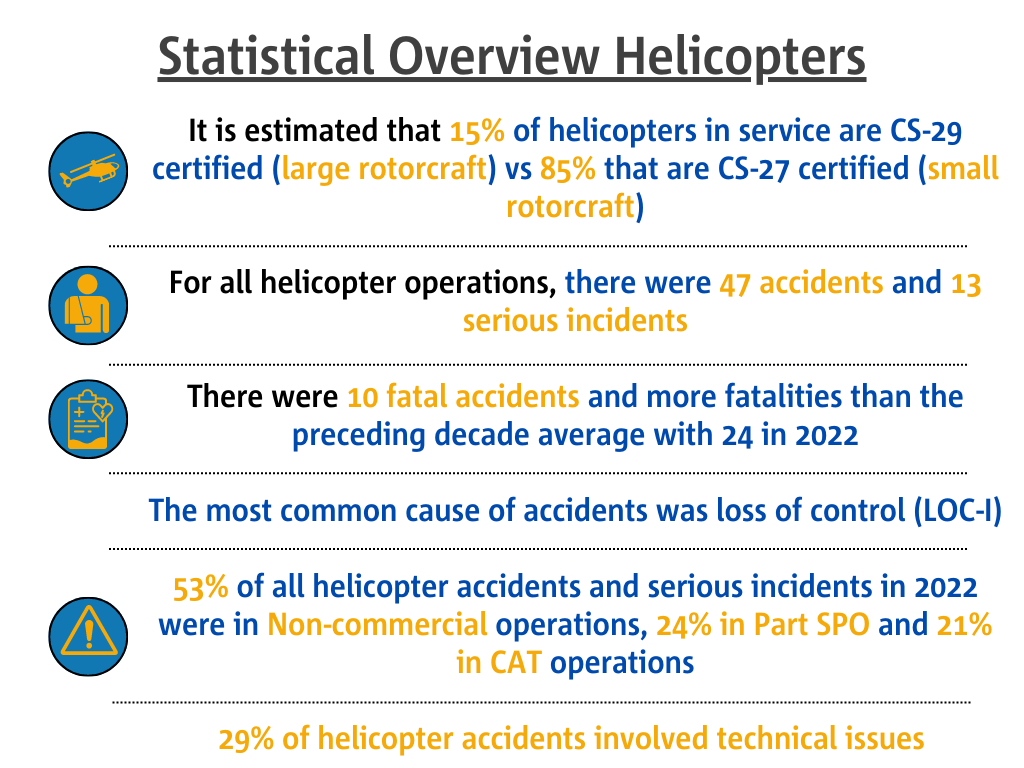

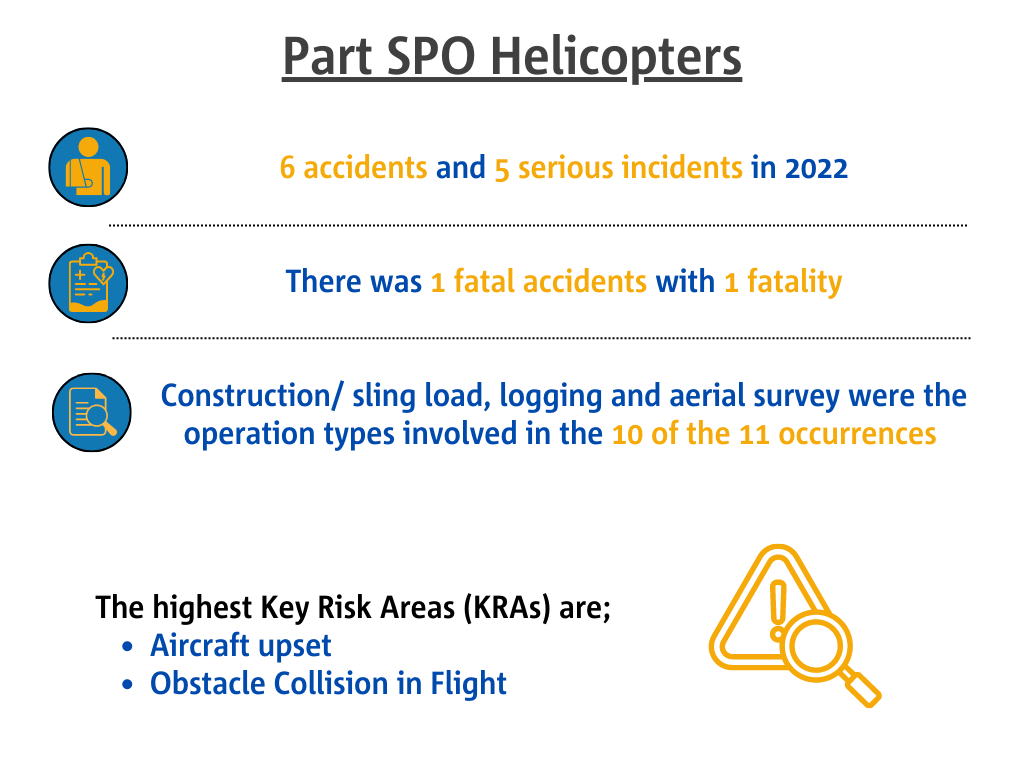
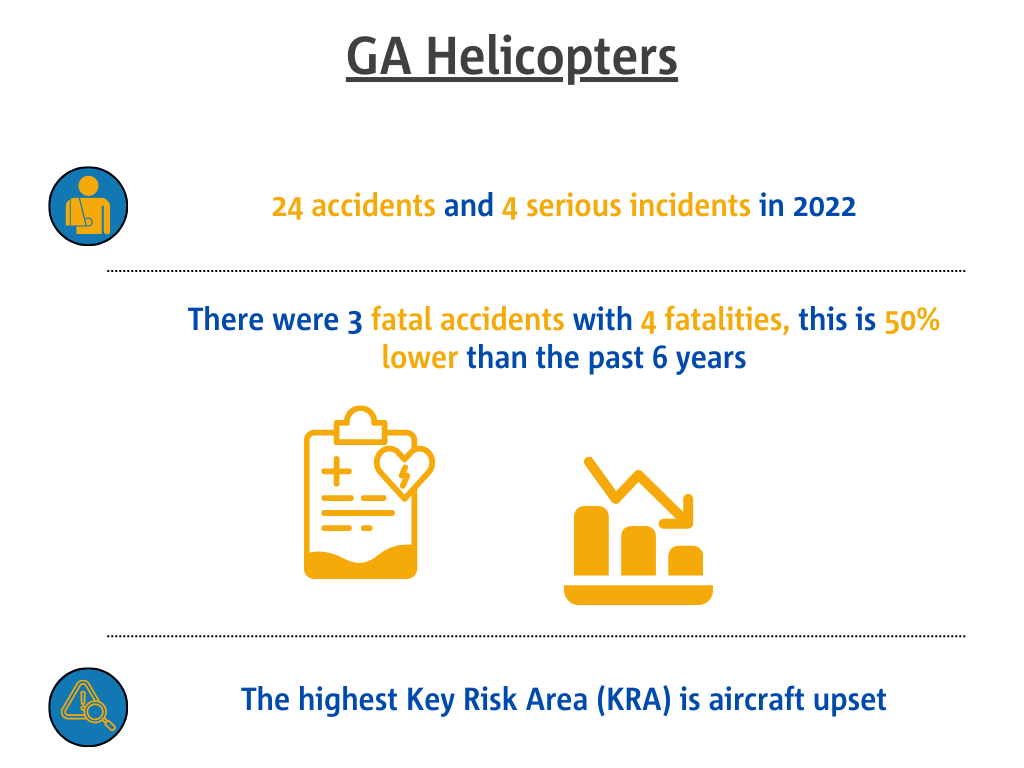
Further reading and analysis
- Chapter 1 – Safety Overview: Global safety picture.
- Chapter 3 – Analysis of helicopters with occurrence class (accidents/ incidents), fatalities and injuries, occurrence categories, flight phase and operation type.
- Appendix 1 – Full list of fatal accidents.
- Appendix 3 – Advanced statistics: With information about human factors, airworthiness aspects and safety issues.
-
Balloons
- In Balloons operations, there were 20 accidents and serious incidents, of which one accident was fatal.
- Over the past 5 years the most common cause of injuries was hard landing, mostly to passengers.
- The highest Key Risk Areas (KRAs) for Balloons were hard landings (classed as abnormal runway contact – ARC in the taxonomy) and collision with obstacles during take-off and landing.
- 14 of the 20 accidents occurred during landing.
Further reading and analysis
- Chapter 1 – Safety Overview: Global safety picture.
- Chapter 4 – Analysis of balloons with occurrence class (accidents/ incidents), fatalities and injuries, occurrence categories, flight phase and operation type.
- Appendix 1 – Full list of fatal accidents.
- Appendix 4 – Advanced statistics: With information about human factors, airworthiness aspects and safety issues.
-
Sailplanes
- There were 27 fatal accidents involving sailplanes in 2022, which is similar to the numbers in 2019.
- There were 122 non-fatal accidents and 33 serious incidents.
- In 2022, the highest numbers of fatalities were recorded when compared to the previous 10 years for sailplane operations with 34 fatalities.
- The main accident types were abnormal runway contact (ARC), often caused by a loss of lifting conditions, and loss of control (LOC-I).
Further reading and analysis
- Chapter 1 – Safety Overview: Global safety picture.
- Chapter 5 – Analysis of sailplanes with occurrence class (accidents/ incidents), fatalities and injuries, occurrence categories, flight phase and operation type.
- Appendix 1 – Full list of fatal accidents.
- Appendix 5 – Advanced statistics: With information about human factors, airworthiness aspects and safety issues.